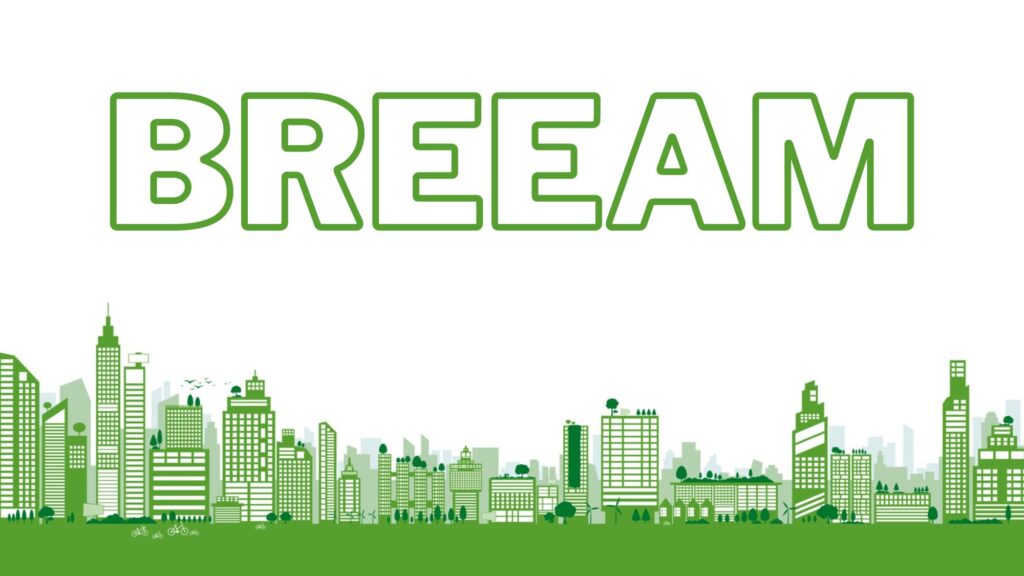How Is a BREEAM Assessment Carried Out For Building?

Yet, before the voyage into the BREEAM assessment process, it’s worth to build a strong base first. It begins with a consultative meeting between stakeholders of the project and BREEAM assessor or accredited professional. The aim of this meeting is to discuss the sustainability goals and objectives of the project and also the requirements of the BREEAM HEA 06 security needs assessment certification. The objectives of the project being one of the topics of discussion during the consultation, other matters emerging are the sustainability achievements the project should meet with the BREEAM certification.
This step is closely linked to the meetings where the general outline of the task, the schedule, and the important people in charge are being introduced. Also, a feasibility study is performed and finding out instances in which the BREEAM standards can be applied in the actual building process is investigated. Through this research, it is better to acknowledge the relevant hurdles and possibilities that may appear during the implementation sustainable approaches in the beginning.
Registration and Documentation:
Immediately upon the setting of the project aims establishing the initial discussions the next step would be to register the project with BREEAM. Documentation is one of the key components of the equitable assessment process. This includes records of calibrating and verifying accessibility of BREEAM assessment tools. Plans and specifications that illustrate architecture, materials, and equipment.
As well as other categories of details take into account the full picture of the project. Final step is to register the project creating the basis for proceeding to the evaluation stage under the BREEAM scheme. Plummeting correct assessment of the building’s sustainability parameters at the earliest stages hinges on gathering every possible bit of information.
Design Stage BREEAM Assessment:
After the list is included in the register and documentation is placed, the attention turns to the evaluation of the work implementation with the BREEAM criteria. Such consideration focuses on a combination of several features taking into tribune: energy efficiency, water usage, materials selection, and indoor indoor air quality. Identifying the sustainable design features and techniques and their integration into the architectural plan and specification is involved.
While joint actions of participating parties such as architects, engineers as well as the clients are important, this stage is a prime period for sustainability goals to be met. Sustainability BREEAM assessment in the design stage puts the foundation for greener practices in the construction process throughout the project implementation.
Stakeholder Engagement:
The most sustainable projects are those that fully engage with all project participants, actively working and with the same goals. Hence, engagement with stakeholders is most likely one of the key elements of the BREEAM assessment stage. The involvement of influential people, including architects, engineers, contractors, clients and key players.
Furthermore, offers this guaranty that all parties will be able to execute the plan of sustainability orders. Join brainstorming is an element of collaborative talk to set the scene for innovation. And thus prevail over possible difficulties. The stakeholder participation creates a sense of feeling of ownership and commitment. Thus ensuring a perfect green building environment through a good BREEAM assessment.
Implementation and Construction:
Crearing the basis for the design work after having consulted all stakeholders the project conits implementation, and construction phases. One of the crucial things in this stage is to vigorously keep track of the construction activities in relation to whether they are in alignment with BREEAM standards. This will be done through a process that includes inspecting the vehicles. And making sure that all the required sustainable technologies, materials. And systems are installed as specified in the analysis of the design phase.
Construction teams are going to follow the Eqwhyte (best green practices) for sustainability during construction. Such as sustainable waste management, energy-saving methods, and responsible sourcing of materials. Regular on-site controls and quality verification are carried out to respond with the BREEAM parameters. So as to apply to a sustainable built environment.
Performance Testing and Verification:
The verifying of construction phase includes a performance testing of several systems. And components that have been installed in the building. The performance test is designed to judge the factors comprising of energy efficiency, water usage, indoor air quality, and thermal comfort. Data derived from testing and regular on-site audits are analyzed to allow consultants verify compliance with BREEAM standards.
On-site inspections and verifications are applied to determine that sustainable renovations and integrations give expected results. Since this phase extracts the simplest units of energy for the building. Which function to ensure that the environment is in the best condition for that building.
Documentation and Reporting:
Detailed procedures and documentation recording throughout the whole BREEAM assessment process. Enable to accumulate relevant data that confirms respect for sustainability objectives. This period will provide an opportunity to assemble all necessary documents. Including test results, construction records, and compliance certificates in a report with photo illustrations.
This report explains how the project aligns with the BREEAM criteria and showcases some of the sustainability designed features including. A rain water harvesting system and passive solar heating design. The transparency and clarity of the documentation is of paramount importance in order to demonstrate to the investors. Higher authority and a cleaning body all the sustainability performance of the building.
Certification and Post-Assessment:
The assessment report for BREEAM at its last phase of process will be submitted to the BREEAM by the consultant for certification. The appraisal process itself is assessed by BREAAM assessors wherein their involvement is necessary for the evaluation of the appraisal’s accuracy. And of compliance with the BREEAM assessment criteria. Additionally, mentioning the specifics like response to any feedback or considering any request for more information. Also helps speed the process of the certification.

As a last step to the process, the building is BREEAM certified once all conditions are met. This is demonstration of excellence by a sustainable design, construction and performance. The evaluation process is not only about the end results. But also it is important to do continuous monitoring to make sure that the building has the necessary standard to be applied all along the life cycle of the building.
Also Read: How Humans Are Killing the Environment Through Daily Habits?


